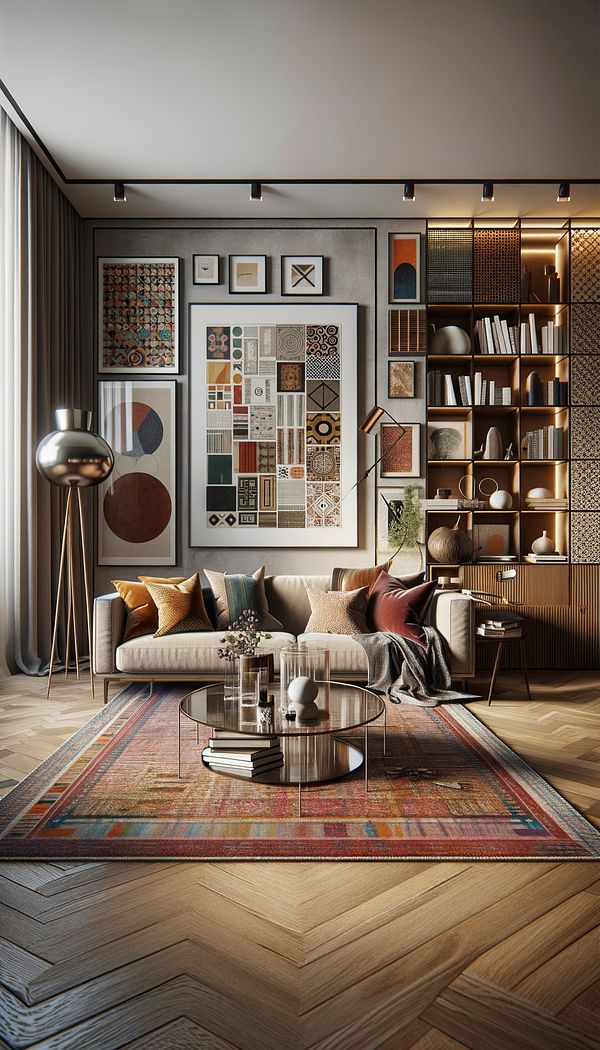What is Variety?
Variety in interior design refers to the quality of being different or diverse.
Description
In the realm of interior design, variety is all about embracing differences to create a visually engaging and dynamic space. It is the use of dissimilar elements within a room to add interest and break the monotony of a uniform style. This can include incorporating a diverse mix of textures, colors, materials and textiles, sizes, shapes, and patterns. Variety can be achieved through the thoughtful combination of furniture types, decorative objects, wall treatments and finishes, and flooring and carpets.
Achieving the right balance of variety is crucial; too little can make a room feel bland and uninteresting, while too much can create visual chaos. The key is to find a harmonious blend that enhances the overall aesthetic of the space without overwhelming it. This principle ties closely with other design principles such as balance, rhythm, and harmony, all of which work together to create a cohesive yet stimulating environment. The successful integration of variety showcases the designer's ability to mix and match disparate elements in a way that feels intentional and curated, adding layers of depth and interest to the design.
Usage
A designer may use variety by pairing a sleek, modern sofa with a vintage, ornate coffee table, or by combining soft, plush textiles with hard, smooth surfaces. In a minimalist space, introducing a bold pattern or a pop of color through throws or cushions can serve as a striking element of variety.
FAQs
-
Can variety be applied to all interior design styles?
Yes, variety can be applied to all interior design styles, but the method and degree of variety will vary depending on the style. In minimalist designs, for example, variety might be subtler, focusing on texture and form, while in eclectic styles, a more pronounced mix of patterns, colors, and periods might be evident.
-
How can I ensure variety without creating clutter?
To ensure variety without creating clutter, focus on strategic placement and choose items that complement each other in some way, such as through color, texture, or theme. It's also important to maintain enough negative space to allow each element to stand out on its own.
-
Is it possible to have too much variety in a design?
Yes, too much variety can lead to a lack of cohesion, making a space feel chaotic and disjointed. Achieving a balance between variety and harmony is key.
Practical Application
Start by identifying a focal point in your room and then introduce elements of variety through accents and accessories around it. Mix textures, finishes, and shapes while ensuring there's a common thread—such as a color scheme—that ties everything together. Remember to step back and review the overall composition regularly to ensure a balanced yet dynamic aesthetic.
-
Materials & Textiles360 articles
-
Furniture Types599 articles
-
Decorative Objects240 articles
-
Flooring & Carpets48 articles
-
Wall Treatments & Finishes157 articles
-
Decorating Principles & Elements330 articles
-
CuratedCurated in interior design refers to a carefully selected and arranged collection of items that enhance the aesthetic and functional aspects of a space.
-
Channel BackA channel back is a type of upholstery design characterized by vertical grooves or channels.
-
Contract DocumentsContract Documents are legally binding agreements and detailed plans used in the execution of interior design projects.
-
RegencyRegency refers to a style of interior design characterized by elegance, refinement, and an emphasis on symmetry and geometric shapes.
-
Spade FootSpade Foot refers to a style of furniture leg that resembles the shape of a spade.
